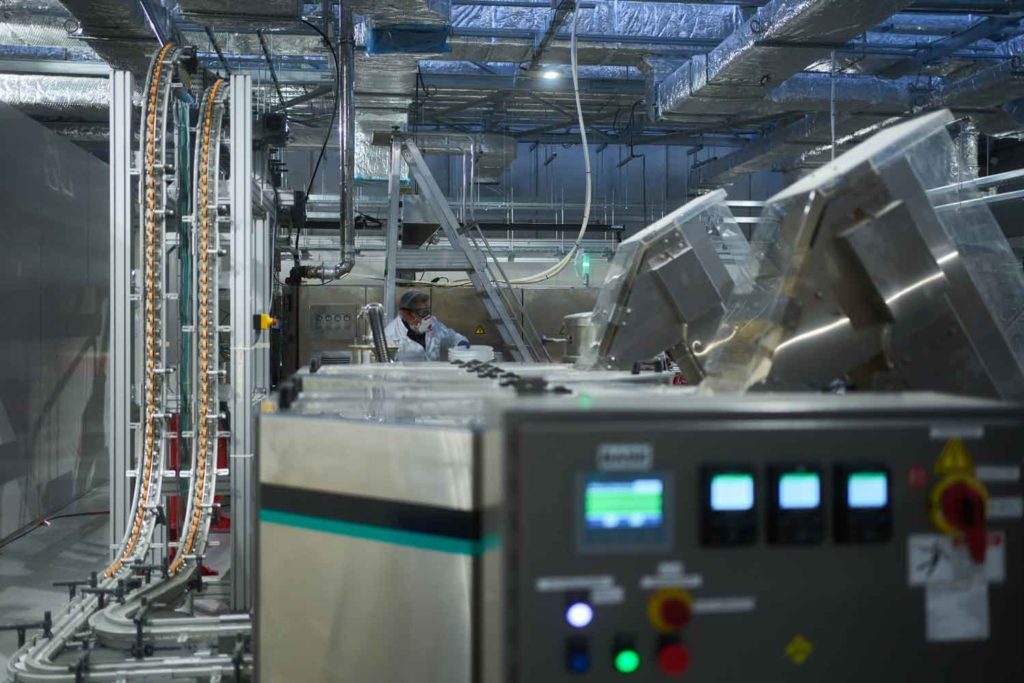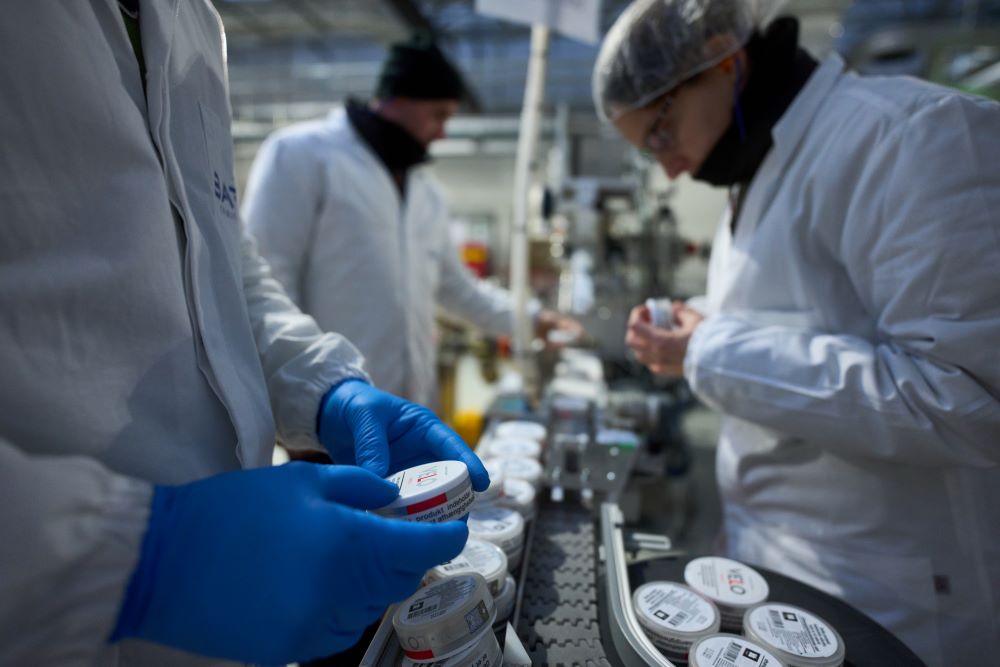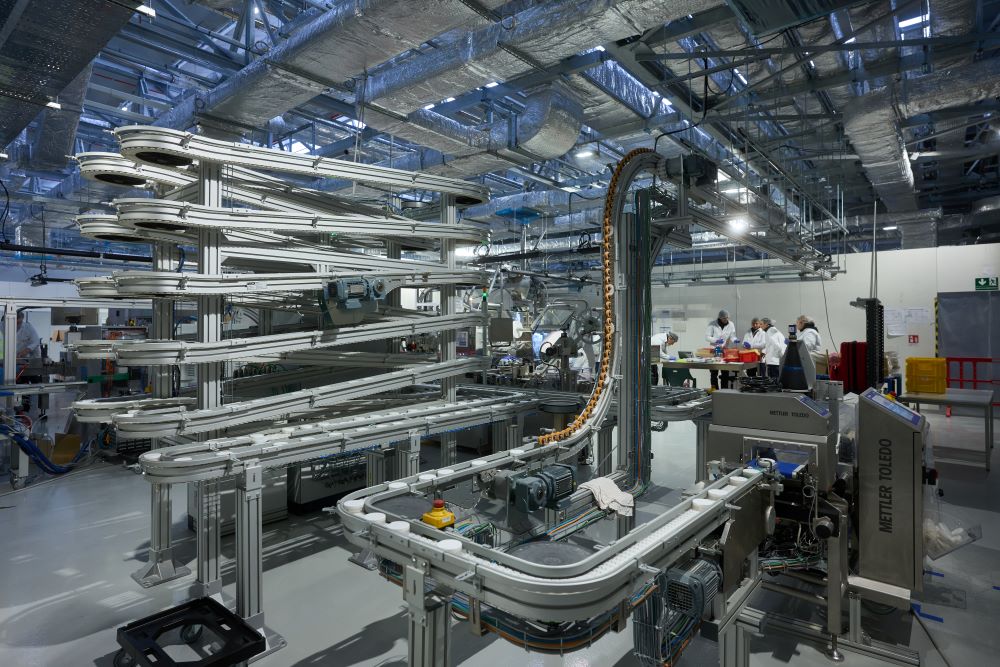Shaping Tomorrow
- Also in TR Print Edition
- April 1, 2023
- 0
- 8 minutes read

The future envisioned by BAT will partially be created at the company’s new innovation hub in Trieste.
By Stefanie Rossel

As its corporate slogan suggests, BAT is working to create a future in which its products offer consumers pleasure at a lower risk than that presented by the cigarettes from its legacy business. Part of that “Better Tomorrow” will be created in the northernmost part of the high Adriatic in Italy, where the company is currently building a new innovation hub.
Located in Bagnoli della Rosandra, part of Trieste’s free port terminal, the innovation hub spans 20,000 square meters and involves an investment of €500 million ($608.63 million) over five years. For BAT, the Trieste manufacturing plant is the first hub within the group that will focus on the production of reduced-risk products,*† including Velo nicotine pouches, Vuse vapor cigarettes and Neo sticks, the consumables for the company’s Glo heated-tobacco product (HTP).
In addition to hosting a new manufacturing site, the Trieste factory will house a digital boutique, an innovation lab and a center of excellence for digital transformation and digital marketing. These aim to develop innovative projects relating to marketing, focusing on the personalization of the client experience—the increasingly direct relationship with the consumer, with the task of providing new services and marketing techniques, using advanced software and creating partnerships with international players and innovative startups.
The project emphasizes BAT’s commitment to both its transformation strategy and Italy. “As consumer preferences and technology evolve rapidly, we rely heavily on our growing global network of advanced manufacturing hubs, innovation super centers and world-class R&D facilities,” said BAT Chief Growth Officer Kingsley Wheaton when announcing the establishment of the hub. By 2025, the company aims to generate £5 billion ($5.92 billion) in annual revenue from its new category products. By 2030, it anticipates having 50 million consumers using its noncombustible products. In February, the number of consumers using BAT’s noncombustible products stood at 22.5 million.
Swift Realization

To find the perfect location for its hub, BAT commissioned a consultancy to study the options, taking into account considerations such as innovation, technology, research and logistics. Trieste emerged as an attractive choice, according to BAT Trieste Vice President Andrea Di Paolo.
“It is the most important commercial port in Italy, with a trade volume of 62 million tons, and well connected with Europe and Italy,” he says. “Trieste also boasts the highest number of researchers of any European city; there are a lot of startup incubators in the area. Besides, there are the University of Trieste and other education and research centers of excellence. It’s the right place where a multinational company can set up an innovation hub because it enables us to work with local universities and research institutions.”
BAT’s project is progressing at remarkable speed. After announcing the investment in September 2021, construction started in January 2022. In June 2022, the company celebrated the halfway mark, with construction 50 percent completed, and in December 2022, the facility started producing Velo modern oral products. The plant is expected to be fully operational in May 2023, and the official opening will take place one month later. “It’s a super-fast project,” says Di Paolo. “In less than one year, we managed to build the factory and start production.”
The Trieste innovation hub will create 600 jobs directly and 2,100 jobs indirectly over the next five years, and the factory will host 12 production lines. Production will be exported to European countries and elsewhere. Up to four lines will produce Velo, helping BAT cater to a rapidly growing market. Nicotine pouches accounted for an estimated $2.38 billion, or 0.3 percent of the global retail market, in 2021. Toward the end of 2022, that value had increased to $5.86 billion, according to Market Reports World. The nicotine pouch market is forecast to expand at a compound annual growth rate of 31 percent until 2028. In 2021, Velo volumes grew by 328 percent compared to the previous year, according to Euromonitor International. Global volume sales amounted to 1.32 billion units in 2021.
Digital Offensive
In the second phase of its hub development, scheduled to be completed by 2025, BAT plans to install six manufacturing lines for new category products, such as HTPs and e-cigarettes. “However, the plan can change rapidly in the next few months depending on demand of products and the capacity we have in Europe,” Di Paolo says. The future aim of BAT is to expand the site beyond this.
In addition to the innovation hub, the Trieste factory will also house BAT’s new digital boutique, an innovation center of excellence for digital transformation and digital marketing. It is the company’s third digital boutique in the world, having already established such sites in the United States (Silicon Valley) and China.
The center will provide digital services—some of them based on artificial intelligence—for BAT’s European markets. “Consumers are increasingly connected and live in an ever-evolving digital ecosystem,” explains Di Paolo. “The objective of the digital boutique is to anticipate new consumer trends and turn them into memorable moments for our target audience in the new categories.”


Carbon Neutral
In line with BAT’s ambition to make its operations carbon neutral by 2030 and achieve “net-zero” greenhouse gas emissions across its value chain by 2050, sustainability has been a major factor in the design of the innovation hub. According to Di Paolo, the site will be carbon neutral from day one, using renewable energy sources and achieving high levels of energy efficiency through intelligent heat recovery, among other technologies.
“The facility has been equipped with high-efficiency photovoltaic solar panels that produce over 1,200 megawatt hours (MWh) of electricity per year,” says Di Paolo. “In addition, a wind tree has been installed to make use of the fact that Trieste is a windy place. It generates the electricity for electric vehicle charging outside the factory.”
Furthermore, an autonomous biomass-fueled power plant will produce over 1,900 MWh of heat. It will be supplemented by a 100 percent renewable electricity supply. The factory also features a strict water management system, which reduces water consumption by dry cooling and harvests rainwater. To minimize the environmental impact of logistics associated with product distribution, BAT is cooperating with the Trieste port authority to determine the optimal routes for shipping.
“Even at this early stage, the Trieste Innovation Hub is an example to follow for BAT’s other factories,” says Di Paolo.
*Based on the weight of evidence and assuming a complete switch from cigarette smoking. BAT states that these products are not risk-free and are addictive.
† BAT notes that the products it sells in the U.S., including Vuse, Velo, Grizzly, Kodiak and Camel Snus, are subject to regulation by the Food and Drug Administration and that the company will make no reduced-risk claims relating to these products without agency clearance.


